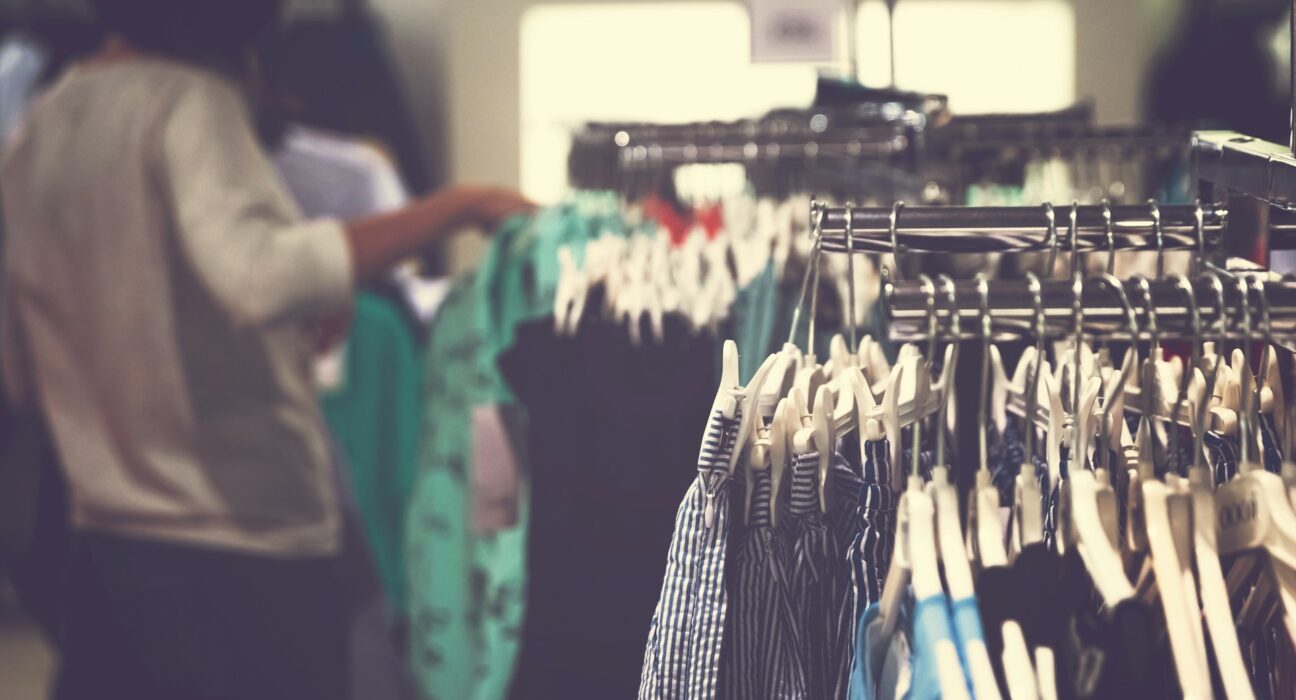The fashion industry produces 92 million tons of textile waste annually, yet hidden in second-hand stores across the country are treasures waiting to transform your wardrobe. Smart shoppers have discovered that thrift fashion offers more than just budget-friendly options—it’s a gateway to creating truly unique vintage outfits that can’t be found in mainstream retail stores.
Building a sustainable style through second-hand shopping requires strategy, patience, and a keen eye for quality pieces. The most successful thrift shoppers understand that creating authentic vintage looks goes beyond simply buying old clothes. It involves understanding fashion history, recognizing quality construction, and knowing how to style pieces in ways that feel fresh and contemporary.
This comprehensive guide will walk you through everything you need to know about building an enviable vintage-inspired wardrobe through strategic thrift shopping. From identifying quality pieces to styling them with modern flair, you’ll learn the insider secrets that seasoned thrift enthusiasts use to create stunning looks while supporting sustainable fashion practices.
Essential Shopping Strategies for Success
Research Before You Shop
Successful thrift fashion hunting begins long before you set foot in a store. Spend time studying fashion magazines from different decades to understand the silhouettes, fabrics, and details that defined each era. Create a mood board of looks you want to recreate, noting specific elements like collar styles, hemlines, and color palettes.
Fashion history knowledge proves invaluable when sorting through racks of clothing. Understanding that 1970s pieces often feature bold prints and wide-leg silhouettes, while 1950s garments emphasize fitted waists and full skirts, helps you identify authentic vintage pieces and spot high-quality reproductions.
Timing Your Shopping Trips
Strategic timing can make the difference between finding hidden gems and leaving empty-handed. Many experienced thrift shoppers swear by weekday morning visits when stores are less crowded and newly donated items are being processed. End-of-season clearances also present excellent opportunities to find quality pieces at reduced prices.
Consider the demographics of different store locations. Thrift shops in affluent neighborhoods often receive higher-quality donations, including designer pieces and well-maintained vintage items. College towns frequently yield trendy pieces as students clean out closets during moves.
Identifying Quality Vintage Pieces
Fabric and Construction Clues
Quality vintage clothing stands apart through superior fabric choices and construction techniques. Natural fibers like wool, silk, cotton, and linen age better than synthetic materials and often indicate higher-quality original pieces. Check seam construction—well-made vintage garments feature finished seams, sturdy zippers, and quality button attachments.
Look for unique details that mass-produced modern clothing lacks. Hand-finished hems, covered buttons, and intricate topstitching often signal authentic vintage pieces or high-quality reproductions worth purchasing. These details contribute to the distinctive character that makes vintage outfits so appealing.
Recognizing Different Eras
Each fashion era has distinctive characteristics that help identify authentic pieces. 1940s clothing often features practical designs with military influences, including structured shoulders and A-line skirts. The 1960s brought mod influences with shift dresses, bold geometric patterns, and shorter hemlines.
Understanding these era-specific details helps you build cohesive vintage outfits rather than mixing incompatible styles. While modern sustainable style often involves mixing different vintage elements, having a foundational understanding of fashion history ensures your combinations look intentional rather than haphazard.
Building Your Vintage-Inspired Wardrobe
Creating a Foundation Wardrobe
Start building your thrift fashion collection with versatile basics that can anchor multiple vintage outfits. A well-tailored wool coat, quality leather boots, and classic handbags provide the foundation for countless styling combinations. These investment pieces often cost significantly less when purchased second-hand while offering superior quality compared to contemporary alternatives.
Focus on neutral colors for your foundation pieces—black, navy, brown, and cream work across multiple decades and pair well with statement vintage finds. Once you have solid basics, you can add era-specific pieces like printed blouses, unique jewelry, or distinctive accessories that define your sustainable style.
Mixing Vintage with Contemporary
The most wearable vintage outfits combine authentic vintage pieces with modern elements. Pair a 1970s blouse with contemporary jeans, or style a vintage skirt with a current season sweater. This approach makes vintage clothing feel current while maintaining the distinctive character that draws people to thrift fashion.
Consider proportion when mixing eras and styles. If you’re wearing a voluminous vintage top, balance it with fitted modern bottoms. Conversely, pair slim-fitting vintage pieces with contemporary loose-fitting items to create visually interesting silhouettes that feel fresh and intentional.
Styling Techniques That Work
Accessorizing for Authenticity
Accessories often make the difference between a costume-like vintage outfit and a sophisticated, sustainable style. Vintage scarves, belts, and jewelry add authentic period details without requiring a complete head-to-toe vintage look. These smaller pieces are also more affordable entry points into vintage fashion.
Pay attention to proportions when accessorizing. 1950s looks call for structured handbags and pearl jewelry, while 1970s styling works well with long pendant necklaces and slouchy leather bags. Research period-appropriate accessories to ensure your styling feels authentic rather than theatrical.
Color Coordination and Pattern Mixing
Vintage outfits often feature color combinations and pattern mixing that might seem unconventional by contemporary standards. Study vintage fashion photography to understand how different eras approached color and pattern. 1960s fashion embraced bold color blocking, while 1940s style often featured subtle pattern mixing within coordinated color palettes.
When working with vintage prints, consider the scale and intensity of patterns. Pair large-scale prints with solid colors or very small-scale patterns to avoid overwhelming your look. Understanding these principles helps create cohesive vintage outfits that feel polished and intentional.
Care and Maintenance of Vintage Finds
Proper Cleaning Techniques
Vintage clothing requires special care to maintain its condition and longevity. Many older garments feature fabrics or construction techniques that aren’t compatible with modern washing machines. Hand washing or professional dry cleaning often proves necessary for delicate vintage pieces.
Research specific care requirements for different fabric types and construction methods. Silk vintage pieces may require different treatment than wool items, and beaded or embellished garments need specialized care. Proper maintenance ensures your thrift fashion investments remain wearable for years to come.
Storage and Organization
Proper storage protects your vintage clothing investment and makes outfit planning easier. Use padded hangers for structured pieces like blazers and coats, and fold knits to prevent stretching. Cedar blocks or lavender sachets provide natural moth protection for wool items.
Organize your sustainable style collection by era, color, or clothing type to make outfit planning easier. Clear storage containers allow you to see pieces while protecting them from dust and pests. Document your collection with photos to track what you own and identify gaps in your wardrobe.
Avoiding Common Mistakes
Size and Fit Considerations
Vintage sizing runs differently from contemporary measurements, and sizes have changed significantly over the decades. Always try on vintage pieces or carefully check measurements rather than relying on labeled sizes. A size 12 from the 1950s might fit like a modern size 6 or 8.
Consider alteration possibilities when evaluating vintage pieces. Simple adjustments like hemming pants or taking in a waist can transform an almost-perfect piece into a wardrobe staple. However, major alterations might compromise the integrity of vintage clothing, so weigh modification costs against the piece’s value.
Recognizing When to Pass
Not every interesting vintage piece deserves a place in your wardrobe. Damaged items that require extensive repair, pieces that don’t fit your lifestyle, or clothing with persistent odors often aren’t worth purchasing, regardless of their price or aesthetic appeal.
Develop criteria for evaluating potential purchases. Consider whether you have three different ways to wear a piece, if it fits your current lifestyle, and whether it adds something unique to your existing collection. This systematic approach prevents impulse purchases that clutter your closet without enhancing your style.
Your Journey to Vintage Style Mastery
Creating a distinctive wardrobe through thrift fashion requires patience, research, and a willingness to experiment with different styles and eras. The most successful vintage enthusiasts approach second-hand shopping as a treasure hunt rather than a quick shopping trip, understanding that building a quality collection takes time.
Remember that sustainable style isn’t just about environmental benefits—it’s about developing a unique aesthetic that reflects your personality while creating looks that can’t be replicated through mainstream retail shopping. Start with one or two key vintage pieces and gradually build your collection as you develop your eye for quality items and learn what works for your lifestyle.
Your vintage outfit journey begins with your next thrift store visit. Armed with knowledge about fabric quality, era-specific details, and styling techniques, you’re ready to discover the hidden gems waiting in second-hand stores everywhere.







